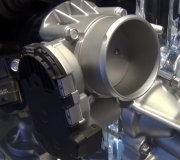Friday, January 5th, 2024 AT 4:51 PM
I was having a problem with the vents inside blowing heat on the top vents, and not enough on the floor. Was told to replace the vacuum lines under the hood, and did it with a vacuum pump, and as I was doing this to find the leak before I replace all of them, I seen that as I took one by one off, rach had pink (transmission oil) coming out, which I figured this is the blockage of why I am not getting enough heat on the floor. Replaced all the lines with new silicone lines, still the same inside, no change. Now, when I put it in 4-wheel drive, I hear the transfer case kick in, but no 4-wheel drive. So far I haven't checked the line that goes down to the transmission, yet, and goes under the battery tray, which is a pain, will do this soon. Could this also be the problem with both of these issues I am having? This is driving me crazy, from one issue to another. I how you can solve this for me, please. Thanks for any info you may pass on. One thing, why or how did the transmission oil get in the lines?


